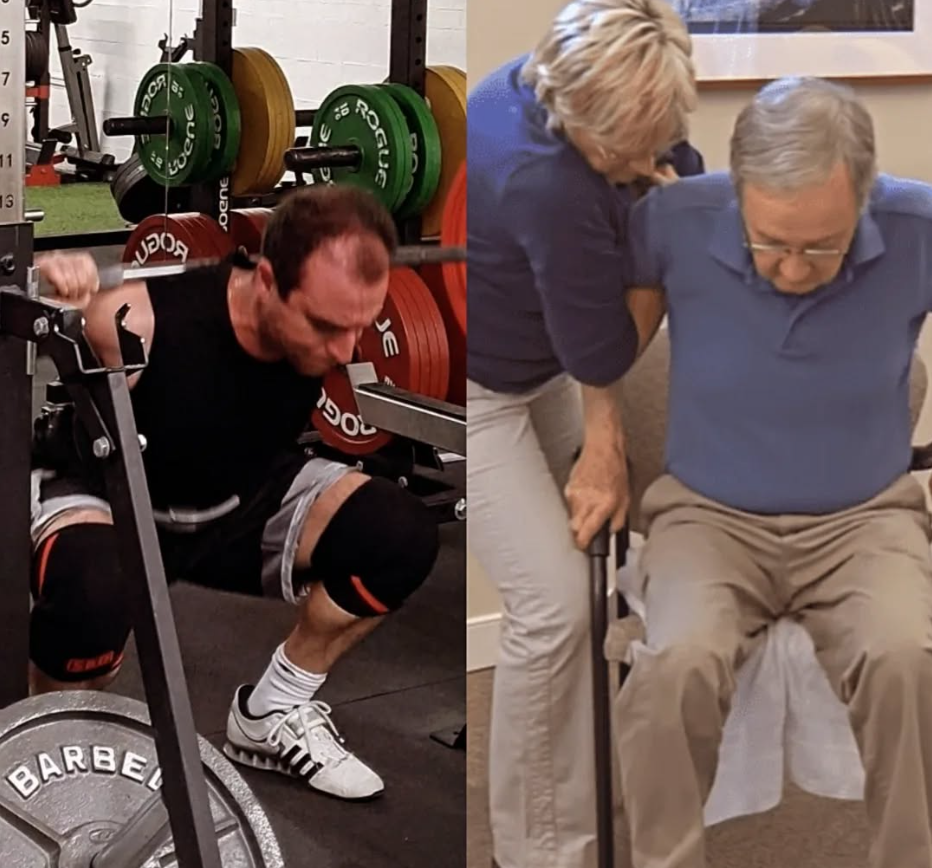Foot and Ankle Conditioning - 5 Exercises For A Stronger Base
- Stephen Strumos

- May 25, 2020
- 3 min read
It's very easy to downplay the importance of strength and stability at the foot and ankle complex. We have much larger muscle groups and bone structures that are responsible for a wider variety of movements.
But if there's an issue at your feet, it can translate into much more obvious problems upstream. And if your feet are strong, your performance on every single exercise increases. I'll give you an example.
Pronation Distortion Syndrome

This syndrome is characterized by pronated feet (flat feet), combined with knee internal rotation and adduction (knock knees). This pattern can lead to foot, ankle, knee, hip, and even lower back pain as a consequence of the dysfunctional movement patterns created throughout the kinetic chain. If there's an issue in one place, the rest of the body has to scramble to compensate for it.
Now you don't have to be diagnosed with this to feel some of the effects. It may not be as obvious looking as it is in the picture shown above.
So many times I've seen personally training clients do a squat assessment and their knees cave inward. You may only look at the knees as the problem but a lot of the time the problem starts at the foot. Rarely will the knees cave in and the foot arches don't collapse, they're almost exclusively tied together.

These are the two most common ways to spot an issue with your "base", your foot arches collapsing and the subsequent knee cave in.
If you've ever had your own knees cave in you know that it can lead to chronic knee pain, especially if you keep moving with these bad patterns.
And because the knees are caving in, you're much less stable, so now the hips try to jump in and compensate for everything that's going on downstream of it and it has to work extra hard to do it. This can lead to issues at the lumbo-pelvic hip complex, which can cause hip and lower back pain.

See how this can get out of hand? All because of issues with your base, your feet.
The body is one big kinetic chain and if there's a weakness in one area, it can translate everywhere else.
Here's how to prevent that from happening by strengthening your feet and ankles. I personally like to focus on:
1. Single leg stability
A good balance on one leg shows stability in the ankle complex. It also strengthens the small intrinsic foot muscles that support a healthy arch and plantar surface.
2. Proper weight distribution

Think of your foot like a tripod. Two points are at the front and one is on your heel. Optimal weight distribution follows this tripod formation and not only keeps you stable but gives you a stronger base to work off of.
3. Posterior Tibialis muscle strength

The posterior tibialis is critical for foot arch support and strength. Having healthy arches allows you to accomplish the above two points.
Strengthening Exercises
The following exercises give you examples of how to make your entire foot and ankle complex stronger. This not only prevents pain and injury caused by dysfunction, but it will make you stronger in every single exercise.
4 Point Taps
Deficit Calf Raises
Calf Raise Toe Up
Single-Leg Passes
Posterior Tibialis Biased Calf Raises
With all of the calf raises (barring the posterior tibialis bias), you can regress the movement by holding onto something for balance and progress it by doing one leg at a time.
The 4 point tap markers can be placed farther away and you can make wider circles with heavier weight to progress the single-leg passes. With any single-leg exercises, adding an unstable surface such as a cushion or Bosu ball can also be a progression option.
Choose an option that works best for you, and get yourself a solid base!
To your good health,

For updates on when new content is available and first look information about special coaching offers, subscribe to my email list by filling in the form at the bottom of the page!
Getting started can be a tough thing to do, and the main reason is that people don’t know where to start.
That’s where I come in.
Regardless of whether you live in the GTA (Greater Toronto Area) and can do in-person coaching with me or you live anywhere else in the world and can do online coaching, I can put a plan in place to help you get to where you need to be.
For more information, check out my coaching options or what my clients have to say.
.png)



Comments